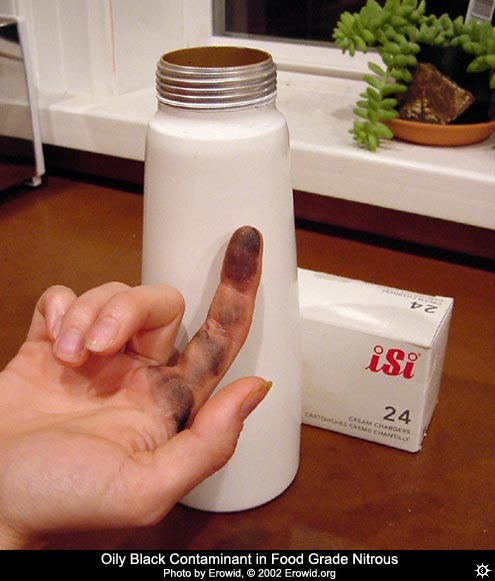Cotcha Yankinov
Bluelight Crew
- Joined
- Jul 21, 2015
- Messages
- 2,952
It seems many people are having issues with machine oil contamination of nitrous oxide chargers. We wonder how much of this is actually inhaled when inhaling with various means, what the significance of this may be, and how to reduce inhalation of oil.
Perhaps transferring the gas from a whip cream dispenser to a balloon before inhaling may cut down on inhaled contaminants/oil?
How much of the oil is effectively "suspended" in the air, and thus may need to be filtered rather than just transferred to a balloon?
https://erowid.org/chemicals/nitrous/nitrous_info5.shtml

Perhaps transferring the gas from a whip cream dispenser to a balloon before inhaling may cut down on inhaled contaminants/oil?
How much of the oil is effectively "suspended" in the air, and thus may need to be filtered rather than just transferred to a balloon?
https://erowid.org/chemicals/nitrous/nitrous_info5.shtml

